Not every animal is thrilled to share a home with a cat. Some see them as a playmate, some see them as competition, and a few… well, let’s just say they see lunch.
From small critters that spark a cat’s hunting instincts to territorial pets that don’t take kindly to feline roommates, certain combinations are just asking for chaos. Sure, some pets can learn to get along, but others? It’s a battle waiting to happen.
Imagine the stand-off between a high-energy ferret and a curious cat. Or the tension of a bird realizing its new housemate is a natural-born hunter. Some matchups are best avoided—for everyone’s sanity.
Before bringing a new pet home, check out these 15 animals that might not be the best fit for your resident cat.
Hamsters
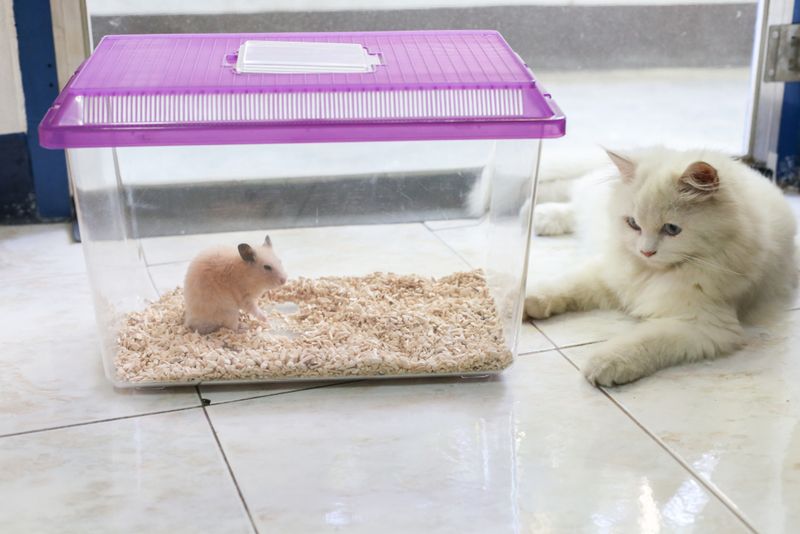
Hamsters are adorable, small, and often a child’s first pet. However, having a cat and a hamster under the same roof may not be ideal. Cats are natural hunters, and a hamster’s fast movements can trigger a cat’s predatory instincts. Even with a secure cage, the stress of a cat’s constant presence could be overwhelming for a hamster.
Many hamster owners find that their tiny pets are more at ease in a cat-free environment. If you must keep both, ensure that the hamster’s cage is out of the cat’s reach and supervise all interactions closely.
Birds
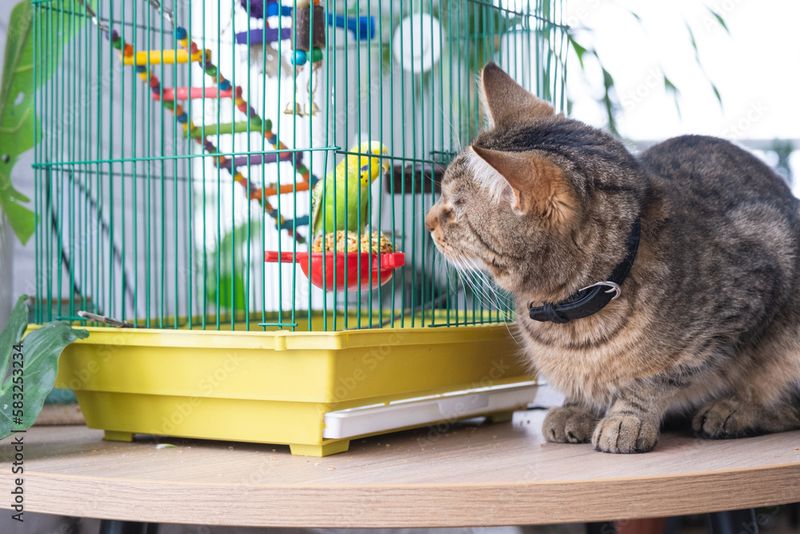
Birds and cats can be an intriguing mix, but not always a harmonious one. Cats are known for their interest in feathery creatures, often turning bird-watching into a hunting expedition. For birds, this can be incredibly stressful and unsafe.
Even with a sturdy cage, a cat’s persistence can cause distress to a bird, especially if the cat tries to paw at the cage. If you choose to have both, ensure the bird’s space is secure and consider investing in cat deterrents to keep them separate and safe.
Fish
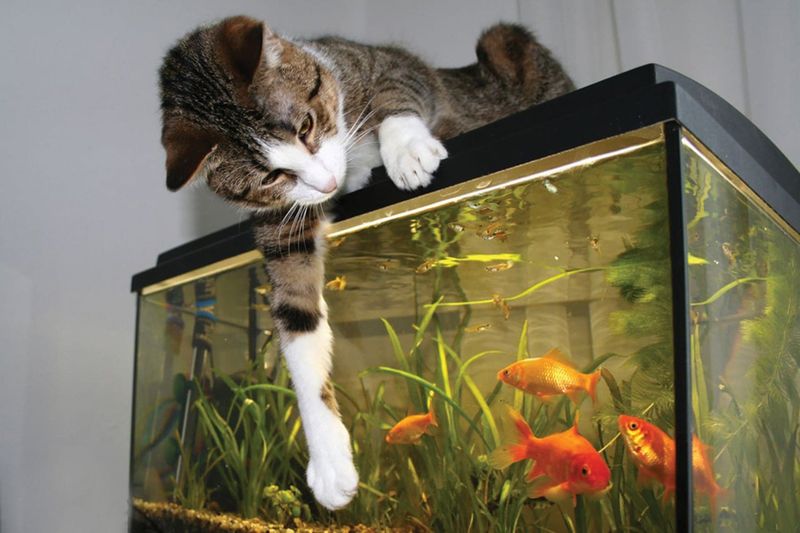
Fish tanks can be mesmerizing, but they become a source of endless fascination for cats. Cats’ natural curiosity and hunting instincts might lead them to attempt fishing expeditions of their own, causing stress to the fish.
To protect both your cat and fish, invest in a sturdy aquarium with a secure lid. Consider placing the tank where your cat can’t easily reach or jump on it. Proper aquascaping can also make it difficult for cats to disturb the fish, providing a tranquil environment for everyone involved.
Reptiles
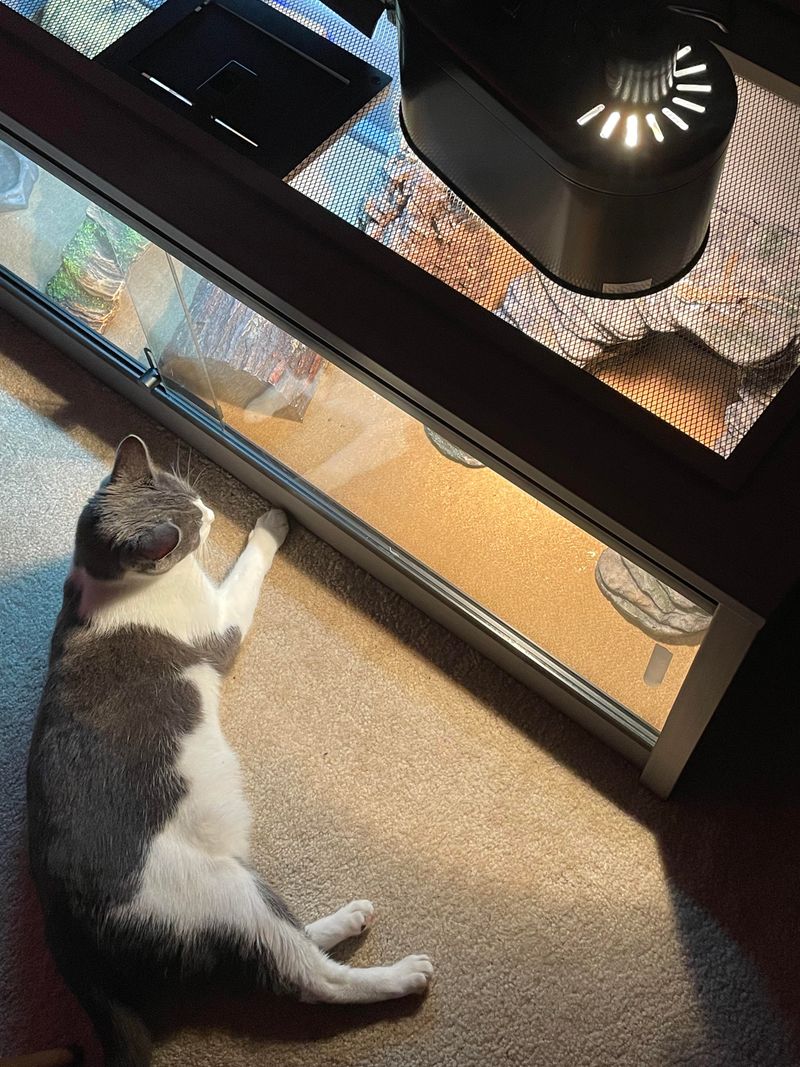
Reptiles might seem like an unusual pet choice, yet they offer unique companionship. However, cats and reptiles don’t always mix. Cats are curious and might paw at or try to access a reptile’s enclosure, causing stress or harm to the reptile.
Reptiles, such as lizards or snakes, require specific environmental conditions, and a cat’s interference can disrupt this. Ensure enclosures are secure and placed in a room where the cat’s access is limited. Supervision is key to preventing any unwanted encounters between these contrasting pets.
Rabbits
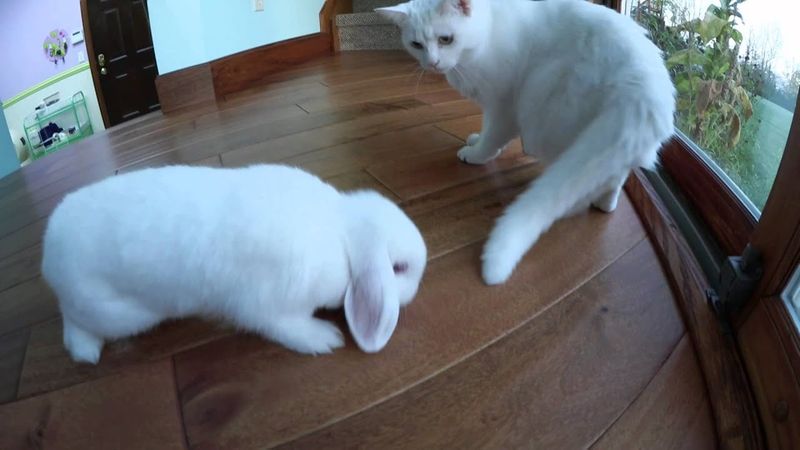
Rabbits are gentle creatures, often considered as good companions. However, their relationship with cats can be complicated. Cats’ hunting instincts may kick in, especially if the rabbit is small or skittish.
It’s crucial to monitor their interactions closely, as even a playful swat can cause injury. Provide safe spaces for the rabbit to retreat and ensure their enclosure is secure. Introducing a rabbit in a cat’s territory requires patience to ensure both pets can coexist peacefully and happily.
Guinea Pigs
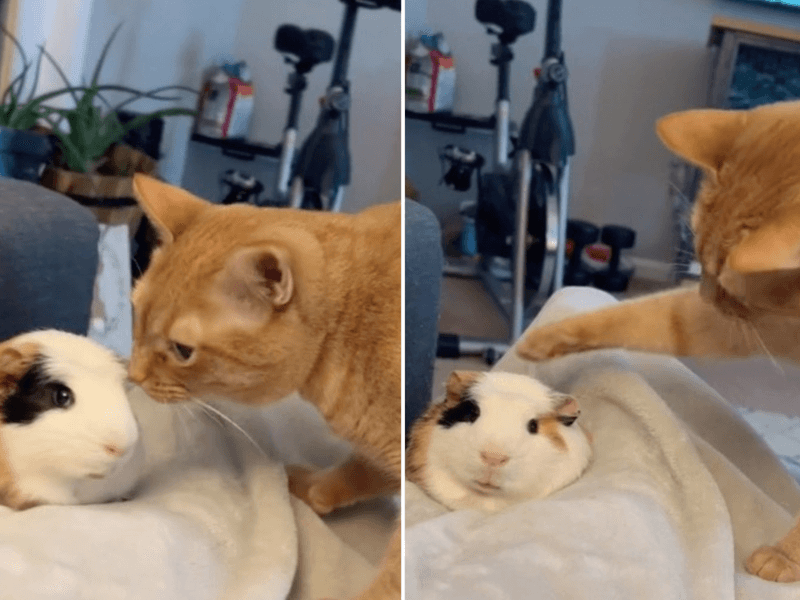
Guinea pigs are social animals that enjoy the company of their own kind. Having a cat can complicate things, as felines might see guinea pigs as prey. The presence of a cat can cause these small creatures significant stress.
If you have both, it’s important to separate their spaces and provide plenty of hiding spots for the guinea pigs. Supervised interactions might work, but it’s crucial to ensure that the cat doesn’t have unsupervised access to them. A careful approach is necessary for peaceful coexistence.
Ferrets
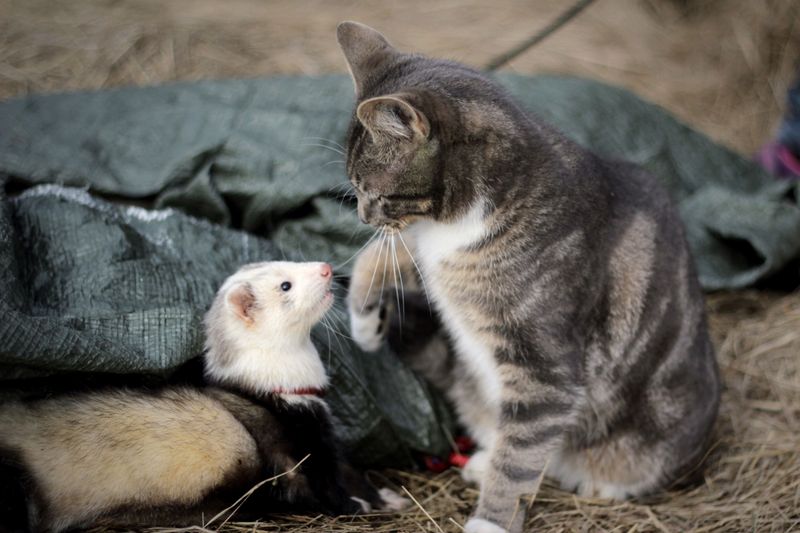
Ferrets are known for their mischievous and playful nature, which might either intrigue or annoy a cat. Cats may perceive ferrets as competition or prey, leading to potential conflicts.
Introducing a ferret to a cat requires careful supervision. Ferrets can be persistent, and their energetic antics might provoke a defensive or aggressive response from a cat. Ensure both pets have their own safe spaces and closely monitor their interactions to prevent any stress or injury.
Small Rodents
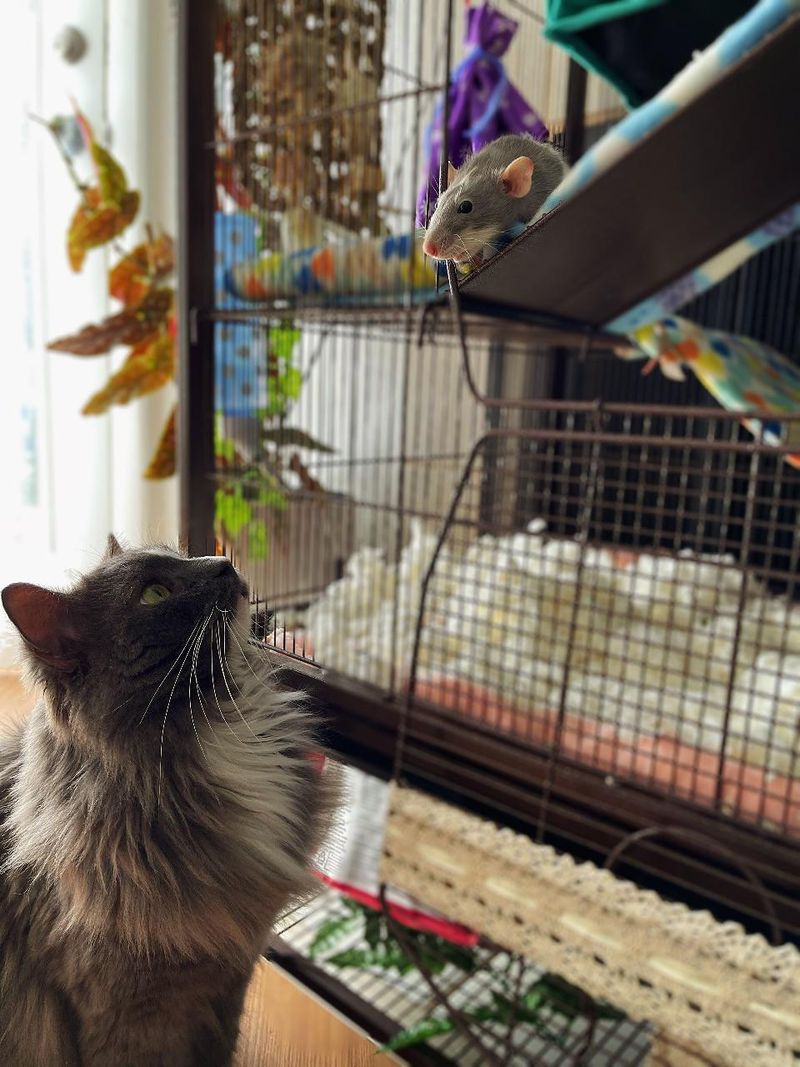
Small rodents like mice and gerbils can be irresistible to cats’ predatory instincts. The smell and movement of these tiny creatures can lead to relentless pursuit by the cat.
It’s essential to house rodents in secure cages, well out of the reach of curious felines. Consider placing the cages in a separate room or using barriers to keep cats away. If adding small rodents to a home with cats, ensure their safety by prioritizing secure housing and minimal contact.
Chinchillas
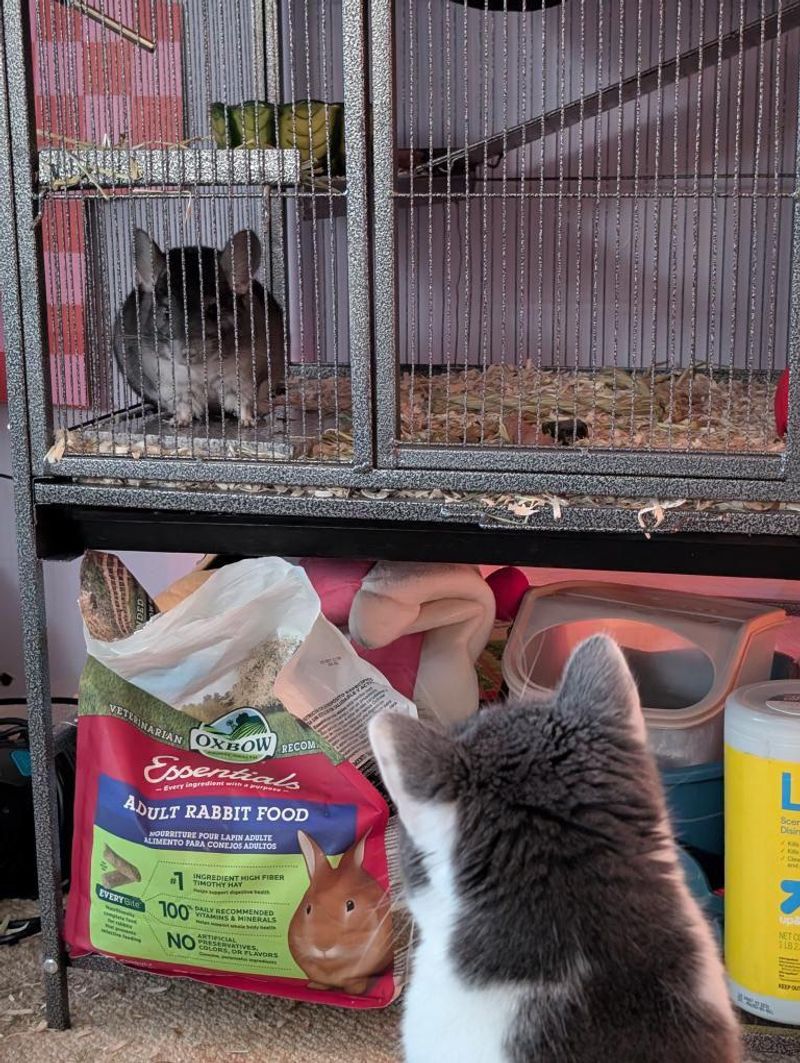
Chinchillas are adorable and exotic pets known for their delicate nature. Their quick movements and fluffy tails can easily draw a cat’s attention, possibly seeing them as prey.
To keep chinchillas safe, ensure their cages are sturdy and placed in areas where cats can’t easily access. Supervised interactions might be possible, but it’s vital to prioritize the chinchilla’s well-being and minimize stress by limiting the cat’s presence around them.
Hedgehogs
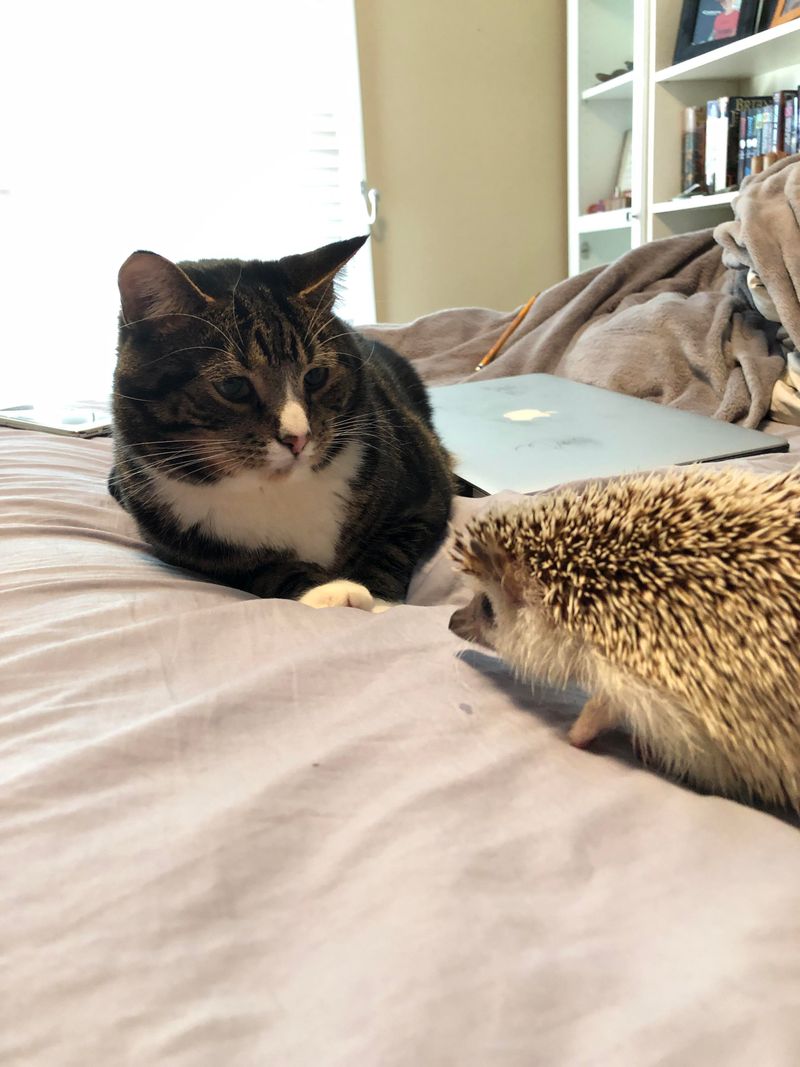
Hedgehogs can be fascinating pets, but their relationship with cats can be tricky. Cats may be curious about these spiky creatures, yet their exploratory nature can stress the hedgehog.
Though hedgehogs have quills for protection, the stress of a cat’s presence can still be significant. Ensuring their enclosure is cat-proof and providing hedgehogs with hiding spaces can help reduce stress. It’s important to supervise any interaction, as the cat’s curiosity could lead to unnecessary stress for the hedgehog.
Sugar Gliders
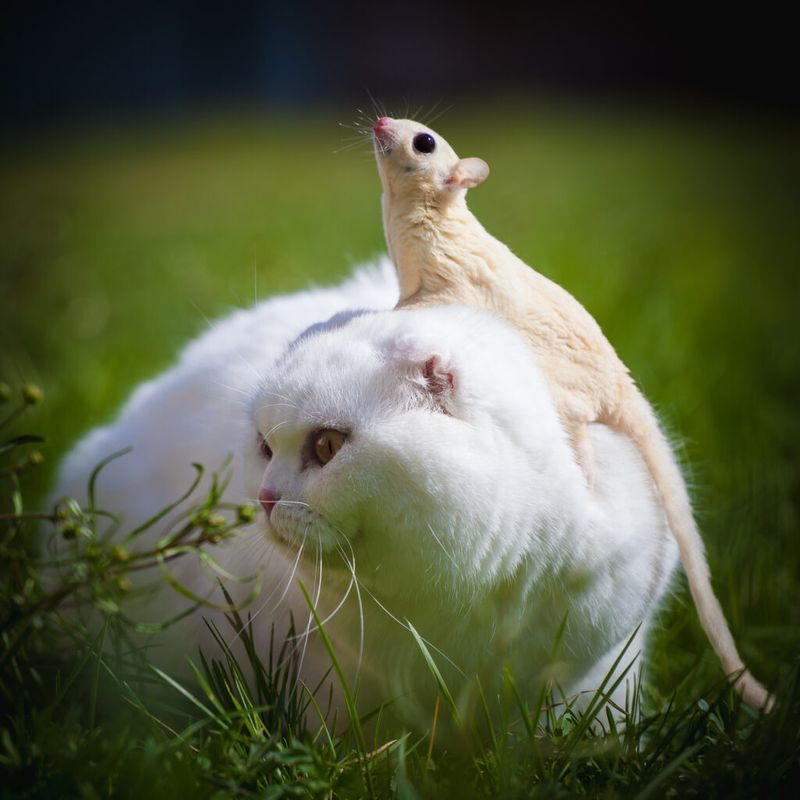
Sugar gliders are nocturnal and agile, with a unique gliding ability that can captivate a cat’s attention. Their small size and quick movements might be seen as prey, leading to dangerous interactions.
To ensure safety, sugar gliders should be kept in secure, escape-proof cages. Consider placing their enclosures where cats can’t easily access, and limit any interactions to supervised settings only. Maintaining a safe environment is key to the well-being of both pets.
Chickens
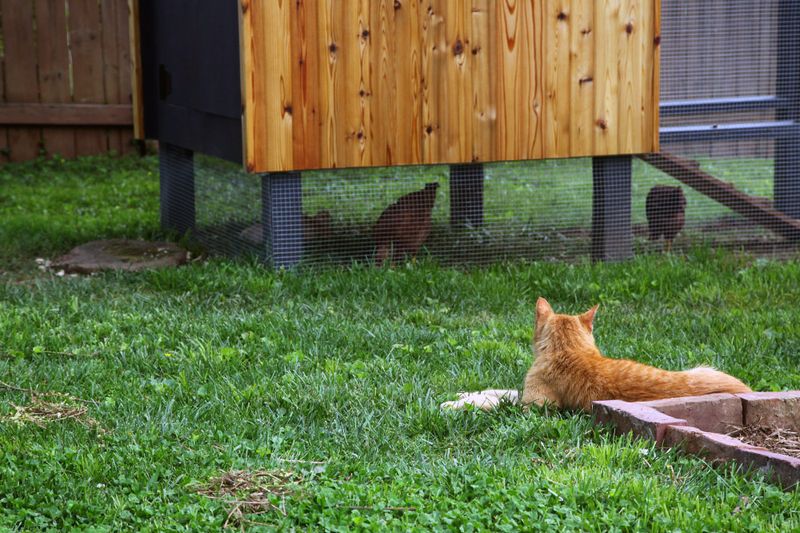
Raising chickens in your backyard can be a rewarding experience, but introducing them to a cat can be challenging. Cats might see chickens, especially chicks, as prey, leading to potential conflicts.
To protect your flock, ensure the coop is secure and provides plenty of space for chickens to retreat. Supervision is crucial when both animals are outside. Establishing boundaries and teaching the cat to respect the chickens’ space can help foster a peaceful relationship.
Turtles
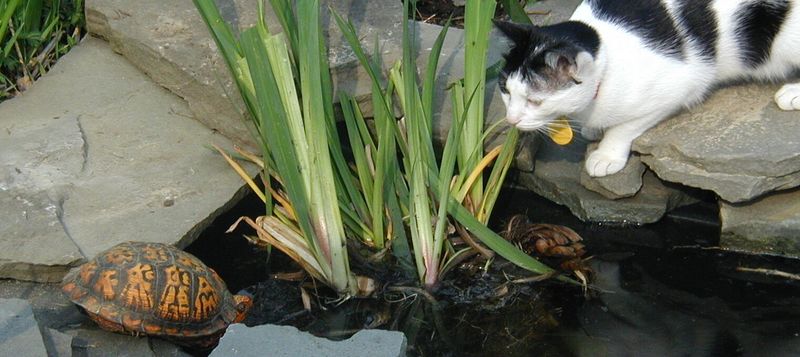
Turtles are low-maintenance pets but can attract the curiosity of a cat. A cat’s attempts to interact with a turtle might disrupt its habitat or stress the turtle.
Secure tanks or ponds are crucial to keeping turtles safe from feline interference. Consider placing the turtle’s habitat in a location with limited access for the cat. Supervised visits and clear boundaries will help ensure both pets can enjoy a peaceful coexistence.
Insects
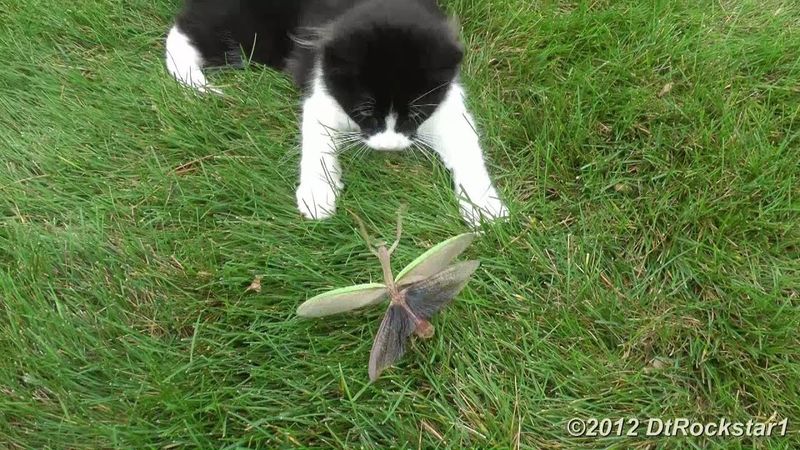
Insects might not be the first pet choice, but they offer fascinating insights into nature. However, cats might see them as playthings or snacks, which can lead to a chaotic environment.
If you have both, ensure that insect enclosures are secure and out of the cat’s reach. Keeping them in a separate room can help maintain a peaceful atmosphere. Supervision is essential to prevent any unwanted interactions and to protect the insects from feline curiosity.
Frogs
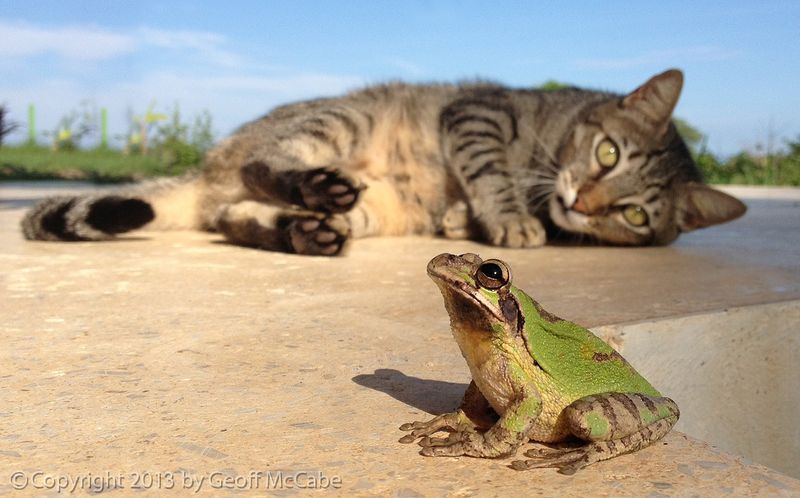
Frogs are unique pets, providing an interesting glimpse into amphibian life. For cats, they might become objects of curiosity or prey.
To keep frogs safe, ensure their habitat is secure and positioned in a location where the cat can’t easily reach. Supervised interactions are essential, as frogs are delicate and can be easily stressed by a cat’s presence. Maintaining a safe distance between these pets is key to their well-being.

